Medical expert of the article
New publications
Preparations
Antibiotics for bronchitis: what better to drink, inexpensive and effective
Last reviewed: 07.07.2025

All iLive content is medically reviewed or fact checked to ensure as much factual accuracy as possible.
We have strict sourcing guidelines and only link to reputable media sites, academic research institutions and, whenever possible, medically peer reviewed studies. Note that the numbers in parentheses ([1], [2], etc.) are clickable links to these studies.
If you feel that any of our content is inaccurate, out-of-date, or otherwise questionable, please select it and press Ctrl + Enter.

Antibiotics for bronchitis are selected after a thorough examination, examination and all necessary tests by the attending physician.
Bronchitis is a fairly common disease, both among children and older people, in recent years the disease has become chronic in the population. In adults, the symptoms of the disease manifest themselves differently depending on some factors. Before starting treatment of the disease, it is necessary to determine the cause that led to the disease. Unfortunately, modern doctors prescribe antibiotics at random, according to the principle "it won't hurt". However, with some forms of bronchitis, the use of antibiotics only hinders recovery. Viral bronchitis can be treated well without antibiotics, since viruses are not destroyed by antibacterial agents. When treating viral bronchitis with antibiotics, suppression of the immune system, dysbacteriosis, allergic reactions begin, and bacteria develop resistance to the drug.
In acute bronchitis, a focus of inflammation develops in the bronchi due to viruses or infection entering the body. If a person had no pathological processes in the lungs before the disease, then in 95% of cases bronchitis is caused by viruses. In acute bronchitis of viral origin, antibiotics are not necessary. If a person has a strong immune system, then the treatment of staphylococcal, streptococcal, pneumococcal infections is mainly symptomatic, recovery occurs on average in two weeks. If the body's defenses are weakened, then antibiotics must be taken. Acute bronchitis is manifested by a strong cough, chest pain, and an increase in body temperature. Most of the patients recover quite quickly (within two weeks), in some cases the cough continues for about a month.
Chronic bronchitis is considered if the disease occurs quite frequently throughout the year (the total number of days of illness per year exceeds 90). With chronic bronchitis, a person suffers from a severe cough with mucus secretion. Such a cough can be associated with harmful working conditions, smoking, allergic reactions, and infections in the upper respiratory tract. In case of exacerbations or repeated diseases, treatment is carried out with antibacterial drugs in combination with expectorants.
Bronchitis of chlamydial and mycoplasmal origin is in a separate category. Recently, bronchitis caused by chlamydia and mycoplasma bacteria has been diagnosed more and more often. The disease develops very slowly, is accompanied by signs of intoxication, the disease is protracted, with frequent relapses, and such bronchitis is extremely difficult to treat. In addition to a strong cough, a person suffers from fever, high temperature, and muscle pain.
Read also: Treatment of cough during bronchitis with medications: tablets, syrups, antibiotics, folk remedies
List of antibiotics for bronchitis
Aminopenicillins:
- amoxiclav;
- amoxicillin;
- arlet;
- augmentin.
Antibiotics of this series act destructively on the walls of bacteria, their action is directed only at harmful microorganisms, while there is no harm to the body as a whole. The only drawback of such drugs is that penicillins can provoke severe allergic reactions.
Macrolides:
- macropen;
- sumamed.
They block the reproduction of microbes by disrupting protein production in cells.
Fluoroquinolones:
- ofloxacin;
- levofloxacin;
- moxifloxacin.
Antibiotics for bronchitis have a broad spectrum of action; their frequent use leads to disruption of the gastrointestinal tract and provokes dysbacteriosis.
Cephalosporins:
- ceftriaxone;
- cefazolin;
- cephalexin.
Broad-spectrum antibiotics, good against microorganisms resistant to penicillins. Drugs of this group are usually well tolerated by patients, in very rare cases they cause allergic reactions.
Antibiotics for bronchitis in adults
Antibiotics for bronchitis in older people often play a major role in the treatment of the disease. First of all, anti-infective agents with an antibacterial effect are used: rovamycin, flemoxin, hemomycin, azithromycin.
In second place is the cephalosporin group of antibiotics: suprax, ceftriaxone, cefazolin, cefepime. These types of antibiotics are used for mild and moderate cases of the disease, mainly in the form of tablets. Severe stages of the disease are treated with injections, in some cases it is advisable to use a combination treatment that combines injections and taking tablets. For bronchitis of viral origin, antiviral drugs are used: vifron, kipferon, genferon, etc. It is also necessary to take expectorants (ACC, lazolvan, bromhexine, etc.). If shortness of breath is tormented, bronchodilators can be used: theopec, euphyllin, berodual, salbutamol, etc. Also, the treatment must be supplemented with vitamin preparations to strengthen the body's defenses.
If antibiotics are prescribed without sputum analysis, then preference is given to broad-spectrum antibiotics, usually penicillin or protected penicillin group. Most often, augmentin from the group of protected penicillins is prescribed, which has a detrimental effect on most bacteria that are not able to develop resistance to this drug. Augmentin is available in the form of tablets, injections, suspension. The drug in the form of a suspension is convenient to use for the treatment of small children, this drug can also be used during pregnancy. The safety of using the drug in childhood and pregnant women has been proven by numerous studies.
Antibiotics of the macrolide group, such as azithromycin, also have a good therapeutic effect. The drugs are convenient to use, since they need to be taken once, and the course of treatment is not very long, 3-5 days.
However, the prescription of an antibiotic should be carried out taking into account the identified pathogens of the disease, based on bacterial cultures ( sputum analysis ).
Antibiotics for bronchitis in children
To treat a disease such as bronchitis in children, drugs that improve bronchial drainage are used without fail, i.e. various mucolytic agents (thinning phlegm): ambroxol, licorice root, marshmallow, etc. Inhalations using a special device for inhalations - a nebulizer, which can be used at home, have recently become very popular.
Antibiotics for bronchitis in children are often prescribed together with antiallergic and immunomodulatory drugs. The phytoantibiotic Umckalor, which includes bacteriostatic properties, has proven its effectiveness and safety for children. This drug is well suited for the final treatment of the disease, after using stronger antibiotics, since the drug has good immunostimulating properties. Umckalor is recommended to be taken for at least another week after the disappearance of the main symptoms of the disease for prevention.
It is imperative to take medications aimed at maintaining and restoring intestinal microflora to prevent the development of dysbacteriosis and weakening of the body's defenses. If treatment is started in a timely manner and an effective course of treatment is chosen, recovery occurs in 2-3 weeks.
 [ 13 ]
[ 13 ]
Antibiotics for chronic bronchitis
Chronic bronchitis is characterized by changes in the bronchial mucosa. Characteristic signs of bronchitis include the release of sputum for more than two years in a row, frequent long-term exacerbations of the disease (at least three months a year). Chronic bronchitis has stages of exacerbation and remission. During exacerbations, the patient is usually in an extremely serious condition, in which he is forced to seek qualified help. During such periods, a person suffers from severe coughing fits, weakness, increased sweating, and fever. Periods of remission are accompanied by regular release of sputum when coughing, which does not greatly affect a person's daily life. With chronic bronchitis, mucous or purulent sputum is released, sometimes blood impurities appear.
Chronic bronchitis most often affects older people; young people and children usually suffer from the disease in a protracted form, with frequent relapses.
Antibiotics for bronchitis should be prescribed only after determining the sensitivity of the pathogens to the active substance. Exacerbation of the chronic form of the disease can occur with the activity of chlamydia, legionella, mycplasma. In this case, effective drugs for treating the disease are macrolide antibiotics (azithromycin, rovamycin). If the pathogen is gram-positive coccal bacteria, cephalosporin antibiotics are prescribed, and for gram-negative coccal infection, the latest generation of drugs.
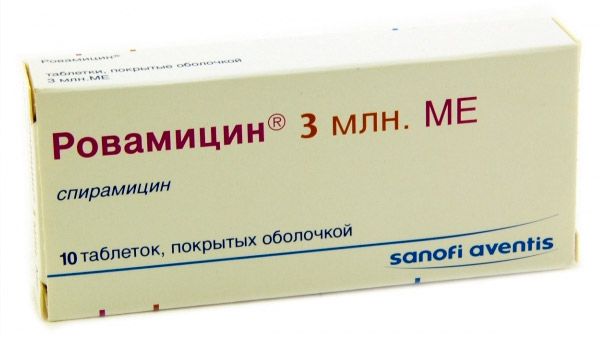
Broad-spectrum antibiotics, tetracyclines, macrolides, etc. show good effectiveness in the treatment of chronic forms of bronchitis.
Antibiotics for acute bronchitis
The causative agents of acute bronchitis are mainly rhinovirus infections, respiratory-sentinel viruses, influenza viruses, etc. Bacterial causative agents of the disease are most often mycoplasmas and chlamydia. In 90% of cases, acute bronchitis is caused by viruses, and in the remaining 10%, by bacteria. Acute bronchitis can also develop as a result of prolonged exposure to toxic gases or chemical compounds.
In acute bronchitis, there is a cough with mucous sputum (sometimes with pus), fever, weakness. In some patients, the cough lasts for about a month.
Antibiotics for acute bronchitis are generally undesirable, since the disease is most often caused by a viral infection, in which antibacterial therapy is ineffective. Treatment of acute bronchitis is mostly symptomatic (antipyretics, antitussives, vitamin preparations). If bronchitis has developed as a result of the flu virus, it is advisable to treat it with antiviral drugs.
In some cases, the use of antibacterial drugs for bronchitis is still necessary. First of all, these are elderly people and small children, as they have an increased risk of developing severe complications (exacerbation of chronic diseases, pneumonia). Usually in such cases, amoxicillin (500 mg three times a day), josamycin (500 mg three times a day), spiramycin (2 times a day at 3 million IU), erythromycin (500 mg four times a day) are prescribed.
Antibiotics for obstructive bronchitis
Obstructive bronchitis is accompanied by a dry, persistent cough that lasts almost without stopping, usually occurs suddenly, and after coughing there is no relief. The cough often intensifies at night, thereby preventing a person from resting, at first the body temperature is not elevated. The usual symptoms of the disease (weakness, headache, fever) are practically not observed. In most cases, the disease causes shortness of breath, difficulty breathing, in small children the wings of the nose often expand when trying to breathe in, while breathing is noisy, with whistling sounds.
The course of obstructive bronchitis can be acute or chronic. Children are most often susceptible to acute diseases, while adults and the elderly are most often susceptible to chronic diseases.
Antibiotics for obstructive bronchitis are prescribed after a bacterial infection has been identified. Common drugs used for treatment include fluoroquinolones, aminopenicillins, and macrolides. For a debilitating cough that prevents the patient from getting a good rest, Erespal is prescribed (usually one tablet twice a day).
Antibiotics for purulent bronchitis
The development of the purulent form of the disease usually occurs due to initially incorrect treatment of the acute form of the disease. In case of bronchitis, a sputum sensitivity test is rarely prescribed and in most cases, broad-spectrum drugs are immediately prescribed. Usually, this type of treatment is effective. Sputum thinners and antiallergic drugs are prescribed together with antibiotics. A number of complications are caused by the viral nature of the disease, in which case antibiotics for bronchitis are completely ineffective, since their effect does not extend to viruses. With such treatment, the disease progresses and turns into a more severe form, most often into a purulent one. With purulent bronchitis, sputum with purulent impurities appears.
Treatment of the disease should be carried out after mandatory determination of the microflora and its sensitivity to antibiotics. Inhalations show good efficiency in the treatment of purulent bronchitis.
 [ 21 ], [ 22 ], [ 23 ], [ 24 ], [ 25 ], [ 26 ]
[ 21 ], [ 22 ], [ 23 ], [ 24 ], [ 25 ], [ 26 ]
Natural Antibiotics for Bronchitis
Natural antibiotics for bronchitis are not able to completely replace drugs, but they can provide protection for the body from most infections, strengthen the immune system (unlike chemical ones), and natural remedies do not destroy the microflora in the intestines and do not provoke dysbacteriosis.
Since ancient times, people have known products and plants that have anti-inflammatory and bactericidal properties in treatment. One of the most famous strong antibiotics of natural origin is garlic. It destroys viruses, bacteria, parasites that penetrate our body well. Garlic has a destructive effect on such bacteria as streptococci, staphylococci, salmonella, diphtheria bacillus, tuberculosis. In total, garlic fights 23 different bacteria.
Onion is also a widely known powerful natural antibiotic that helps stop the proliferation of dysentery, diphtheria, tuberculosis, streptococcal, staphylococcal infections. The aroma of onion helps cleanse the respiratory tract.
Horseradish root contains lysozyme, which destroys the cellular structure of bacteria, thereby eliminating the infection.
Black radish has a destructive effect on the cells of microorganisms. In combination with honey, it has a strong bactericidal effect. In addition, it helps to strengthen the body's defenses weakened by the disease.
Pomegranate has quite strong anti-inflammatory and antimicrobial properties, since ancient times pomegranate has been used to treat typhoid fever, salmonellosis, colitis, stomach diseases, non-healing wounds, dysentery, cholera, and sore throats. The substances in pomegranate act selectively in the human body, unlike chemicals, and destroy only pathogenic microorganisms.
Raspberry has long been known for its diaphoretic, anti-inflammatory, bactericidal properties, and it also has a good calming effect. Raspberry is especially effective for diseases of the throat, bronchi, etc.
Viburnum has good bactericidal properties, successfully destroys various fungi, bacteria, viruses, and also helps to increase immunity. But viburnum cannot be taken constantly, it is recommended as a preventive measure against seasonal diseases (in the autumn-winter period).
Honey contains all the microelements important for our body. It helps to cope with various diseases, in particular those caused by bacterial infections.
The composition of propolis is rich in essential oils, flavonoids, flavonoids, organic acids. Scientists have repeatedly proven that propolis is effective in the fight against various pathogenic microorganisms. Propolis has no contraindications and side effects (except for individual intolerance), in addition, microorganisms do not develop resistance to it.
Aloe is a well-known medicinal plant that is still popular today. In addition to many microelements, vitamins, etc., aloe contains one substance that has a strong antiviral, antiseptic, and antifungal effect. In addition, aloe increases the body's defenses and helps cope with serious diseases.
Mumiyo resembles propolis in its principle of action. Scientists have already proven the presence of an antibiotic in mumiyo, which is more powerful than penicillin. A mumiyo solution destroys E. coli, staphylococci and other pathogenic microorganisms. It is necessary to take mumiyo in a course of no more than 10 days, since a strong stimulating effect is observed.
Chamomile contains a large number of essential oils, which have a good anti-inflammatory and antiseptic effect on the human body. Chamomile also contains various acids, glucose, carotene, which are very useful for human health. Modern science has recognized chamomile as one of the few plants that help a person effectively fight gastrointestinal diseases, nervous disorders, colds, etc. Chamomile is also a strong antiseptic and has expectorant properties.
Calendula has a wide variety of uses. Calendula owes its antibacterial properties to the essential oil it contains. Calendula flower infusion is usually well tolerated by people prone to allergic reactions.
Sage is one of the strongest natural antibiotics, possessing antiseptic and antiviral properties. Sage has proven itself as an additional remedy in the treatment of diseases caused by various viral and bacterial infections. It is highly effective against gram-positive microorganisms (enterococci, staphylococci, etc.).
Essential oils of plants such as sage, cloves, tea tree, fir, lavender, mint, etc. are natural antibiotics that destroy bacteria, viruses, fungi and inhibit the proliferation of microbes.
Read also: Treatment of bronchitis and cough with honey and milk, aloe, onion and radish
Antibiotics for pregnant women with bronchitis
The incidence of bronchitis in pregnant women is quite high. This is primarily due to a weakened immune system that is unable to resist viruses and infections. The development of bronchitis begins as a manifestation of a common cold (weakness, fever). A few days later, a dry cough begins, and after a couple of days, phlegm begins to be released from the bronchi. It is extremely important for the expectant mother to take her health seriously, since this threatens various (sometimes quite serious) complications for the child. If you suspect that bronchitis is developing, you should immediately consult a doctor.
Removing phlegm from the lungs of pregnant women is difficult, since the mobility of the diaphragm is reduced, and it is in a raised position. And phlegm stagnating in the bronchi for a long time prolongs the duration of the disease, in addition, this condition is extremely harmful for both the expectant mother and her baby. If the disease lasted no more than two weeks in total, most likely, the disease was acute, but if the treatment dragged on for a month or more, it means that the disease has become chronic. Acute bronchitis does not have a harmful effect on the future baby, but a long-term chronic form of the disease can lead to intrauterine infection of the fetus. After the examination and all tests have confirmed the diagnosis of bronchitis, the woman's treatment should be started as early as possible.
X-rays are prescribed to pregnant women only in extreme cases, when the doctor has doubts about the correct diagnosis, the disease is accompanied by a very serious condition of the woman, various complications arise. Antibiotics for bronchitis are prescribed quite often, but the use of such potent drugs for women during pregnancy is not recommended, especially during the first three months, any medications should be excluded. As a rule, antibiotics are prescribed to pregnant women in extreme cases, when the mother is at risk of serious complications. If it is not possible to do without antibiotics, drugs from the penicillin series are prescribed, which can be used in the treatment of pregnant women. These drugs practically exclude the possibility of harm to the child. If the woman is in the second trimester, then it is possible to use drugs of the cephalosporin group.
In acute bronchitis, you can use Bioporox, a local antibiotic used for inhalation. This product acts directly in the respiratory tract, so it completely eliminates the possibility of penetration through the placenta, which is extremely important for a pregnant woman.
Read also: What to do if a dry cough does not go away?
A good antibiotic for bronchitis
Antibiotics from several groups are used for bronchitis:
- aminopenicillins - act destructively on the walls of bacteria, thereby causing the death of microorganisms. From this group, amoxicillin and flemoxin are often prescribed. The human body does not have components that are similar in structure to the cell walls of bacteria, so drugs in this group act exclusively on microbes and do not have a harmful effect on the human body. But penicillin antibiotics are more likely than other drugs to provoke severe allergic reactions.
- Macrolides - disrupt protein production in bacterial cells, as a result, bacteria lose their ability to reproduce. Azithromycin and roxithromycin are widely used. If the disease is protracted, drugs of this group can be used for a long time without fear that the drug will harm the body. This group of drugs can be used in childhood, during pregnancy and breastfeeding.
- fluoroquinolones – disrupt the DNA of bacteria, which leads to their death. Moxifloxacin and levofloxacin are usually prescribed. Drugs in this group show good results in the treatment of various forms of bronchitis, but they are quite expensive. Fluoroquinolones have a broad spectrum of action (an order of magnitude greater than macrolides and aminopenicillins), therefore, with prolonged use, they provoke the development of dysbacteriosis.
It is quite difficult to say which group of antibiotics is better. The first-line drugs (i.e. those that the doctor prescribes first) are penicillin antibiotics. In case of individual intolerance or pronounced resistance of microorganisms to penicillins, second-line drugs are used - macrolides. If for some reason macrolide antibiotics are not effective in the treatment of bronchitis, they switch to fluoroquinolones. Usually, treatment is limited to only the three above-mentioned groups of antibiotics, but in some cases tetracyclines and cephalosporins can be used. In different clinical situations, a drug is selected that is optimal for specific conditions, taking into account the tests, the patient's condition and the severity of the disease.
Sumamed for bronchitis
Sumamed is used to treat various infectious and inflammatory diseases. This drug belongs to the group of macrolides, is well absorbed in the gastrointestinal tract, has a good ability to penetrate the blood and bacterial cells. The drug penetrates especially well into the cells responsible for immunity, which contributes to its rapid entry into the source of infection, where it destroys pathogens. A fairly high concentration of the drug is observed in the site of inflammation, and for a long time, at least three days, which made it possible to reduce the course of treatment. Sumamed is prescribed for a three-day course once a day (500 mg), an hour before or two hours after meals. This antibiotic is active against a large number of pathogens of the upper respiratory tract, ENT organs, soft tissues and skin, joints, bones, as well as against ureaplasma, mycoplasma, chlamydial infections, which are difficult to treat.
Antibiotics for bronchitis should be prescribed only after a preliminary study of secretions (sputum) for bacterial sensitivity. However, in practice, broad-spectrum antibacterial drugs, such as sumamed, are usually prescribed immediately, and if after analysis it is established that the bacteria are not sensitive to this type of antibiotic, the doctor changes it to another antibacterial drug.
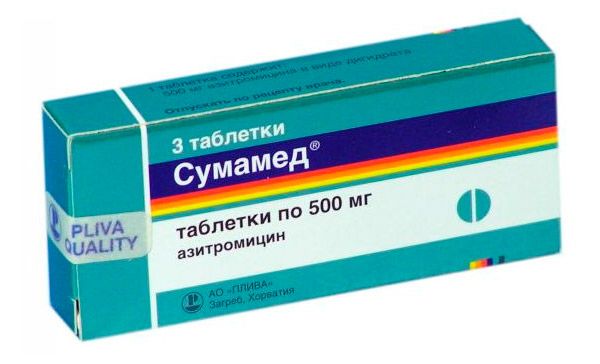
Sumamed is usually well tolerated by patients and does not cause side effects if all the necessary rules for taking it are followed. However, side effects do occur in rare cases (as with any other drug): nausea, vomiting, abdominal pain. In the intestines, irritation is caused not by the drug itself, but by opportunistic microflora living in the human intestine, which begins active life after the destruction of beneficial microflora. Candida fungi also increase their activity, which threatens the development of candidomycosis (thrush) of the oral cavity, intestines, genitals and other mucous membranes. Sumamed can also disrupt the functions of the liver, nervous system (lethargy, insomnia, dizziness, increased excitability, etc.).
Overall, sumamed is an effective drug that must be used correctly and accurately.
Augmentin for bronchitis
Augmentin inhibits bacterial growth and has a destructive effect on microorganisms. The drug belongs to the semi-synthetic antibiotics of the aminopenicillin group, contains clavulanic acid, which enhances the effect of the main substance. The antibiotic drug is produced in the form of injections, drops, tablets, powder for suspensions. Due to its wide spectrum of action, the drug is used to treat most inflammatory infections caused by bacteria that have not developed resistance to penicillins. Despite the fact that augmentin belongs to penicillin antibiotics, its effect on microorganisms is enhanced by clavulanic acid, which blocks the action of beta-lactamase produced by microorganisms to suppress the activity of penicillins. As a result, augmentin is effective against a larger number of bacteria than other antibiotics for bronchitis of the penicillin group.
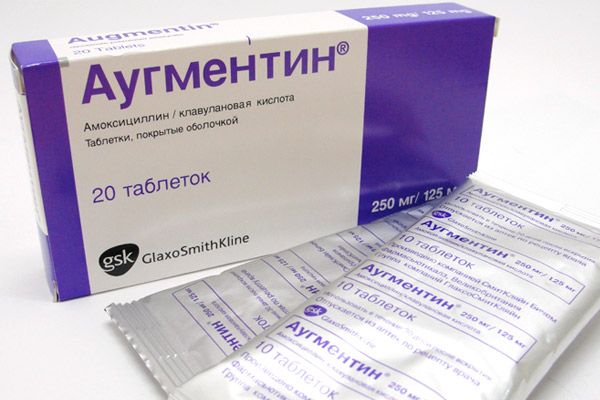
Side effects during treatment with Augmentin develop quite rarely, in some cases dysbacteriosis, liver dysfunction, nausea, urticaria may occur. Anaphylactic shock may be observed extremely rarely. Augmentin is not prescribed in case of individual intolerance to penicillins, liver or kidney failure, during pregnancy (especially in the first trimester).
The dosage of the drug depends on the patient's condition, individual sensitivity of microflora, and age of the patient. For small children (up to one year), the drug is prescribed three times a day in the form of drops of 0.75 or 1.25 ml. In severe forms of the disease, intravenous injections are prescribed every 8 hours. Children 7 to 12 years old are prescribed the drug in the form of a syrup or suspension of 5 ml 3 times a day. For children over 12 years old and adults with mild to moderate disease, the drug is recommended three times a day in the form of tablets (0.375 mg). In severe bronchitis, it is recommended to take 0.625 mg (2 tablets) three times a day. If liver function is impaired, the individual dosage of the drug is determined by the attending physician.
Amoxiclav for bronchitis
Amoxiclav is a combination drug with a broad spectrum of action, it acts destructively on most microorganisms that cause infectious diseases. The drug, like many other antibiotics for bronchitis, is produced in various forms: tablets, injections, drops and suspensions. The dosage of the drug depends on age, body weight, severity of the disease. The recommended dose for an adult is 1 tablet three times a day.
Amoxiclav contains a penicillin antibiotic (amoxicillin) and clavulanic acid, which also has a slight antibacterial effect. Due to this, the drug is effective against bacteria that are resistant to penicillin.
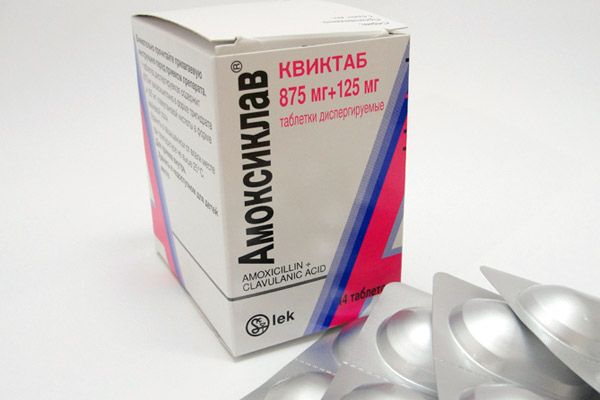
Amoxiclav is well absorbed in the gastrointestinal tract, penetrates the blood, from where it gets into various tissues, it also has the ability to penetrate the placenta. The drug is excreted mainly by the kidneys, decomposing into metabolic products. Usually, the drug is well tolerated by patients and has virtually no contraindications. Amoxiclav cannot be used in case of individual intolerance, liver dysfunction, lymphocytic leukemia, infectious mononucleosis, in children under 12 years of age (in tablet form). After taking the drug, in some cases, nausea, vomiting, dizziness and headaches may occur, convulsions occur extremely rarely. The drug also has the ability to reduce the body's defenses.
For more detailed information about treatment regimens for bronchitis with amoxiclav, read this article.
New generation antibiotics for bronchitis
Antibiotics for bronchitis are usually prescribed with a broad spectrum of action, although the choice of drugs should depend on the results of a laboratory study of sputum. The best remedy for treating the disease will be one that has a detrimental effect directly on the causative agent of the disease. This approach to treatment is due to the fact that laboratory analysis takes quite a long time (3-5 days), and treatment should be started as early as possible to avoid complications.
The following groups of antibacterial drugs are used for bronchitis:
- penicillins - contain penicillin and substances that enhance their action. Penicillin series drugs have been used in medicine for quite a long time. During this period, microorganisms have acquired resistance to penicillin, so it became necessary to enhance the drugs with special substances that would block the action of enzymes produced by microorganisms to reduce the activity of penicillin. Currently, the most effective antibacterial penicillin series drugs are panclav, amoxiclav, augmentin.
- Macrolides – usually prescribed when there is an individual intolerance to penicillin. Today, erythromycin, azithromycin and clarithromycin are widely used to treat bronchitis.
- Cephalosporins are usually prescribed for obstructive forms of the disease. Modern effective drugs are ceftriaxone, cefuroxime.
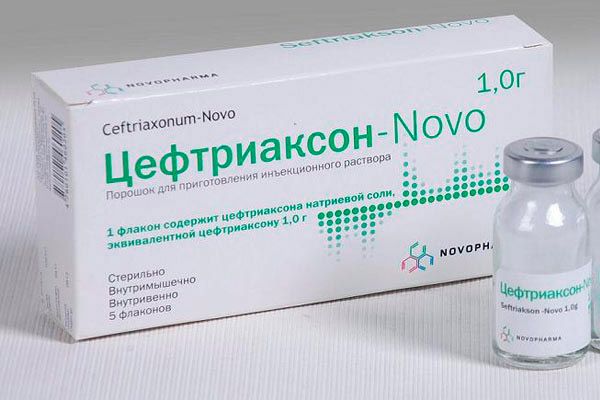
- Fluoroquinolones - are usually used in the treatment of chronic bronchitis in the acute stage, it is recommended to start treatment from the first days. Today, moxifloxacin, levofloxacin, ciprofloxacin are very effective.
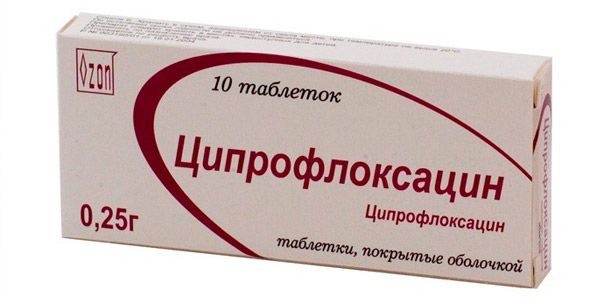
The effectiveness of a particular antibiotic is determined after conducting a laboratory test for the sensitivity of pathogenic microflora.
How to cure bronchitis without antibiotics?
Bronchitis is a common respiratory disease, so there are many folk medicine recipes that can be prepared at home, which help to effectively fight viruses and bacteria. Antibiotics for bronchitis are usually prescribed if a bacterial infection is detected. In other cases, treatment with such drugs will do more harm to the body.
The very first helpers of man in the fight against diseases are the well-known products: onions and garlic. Their effect has been known to people since ancient times. For the treatment of bronchitis, onion tincture with honey was widely used. To prepare the medicine, you need to grate the onion, then add honey to it (1 part honey and 3 parts onion). You need to take this remedy about three times a day, a tablespoon, 20-25 minutes after eating.
Also effective in combating respiratory diseases is a sweet baked onion according to an old French recipe. To prepare, remove the core from a halved onion and pour a teaspoon of sugar into the cavity, bake in the oven at 150 degrees until the sugar caramelizes.
Milk with sage will help to overcome a debilitating cough. For a glass of milk you will need a tablespoon of the herb, the decoction should be boiled for about 10 minutes. Then the mixture is filtered and taken warm, half a glass at a time. The decoction should be drunk in small sips.
Drinking plenty of hot drinks helps fight bronchitis: tea with honey, viburnum or raspberries, which contain a lot of vitamin C to support immunity. It is imperative to eat more citrus fruits (lemon, grapefruit). Decoctions of linden, mint, and pine buds have good anti-inflammatory and body-supporting properties. A decoction of a mixture of plantain, licorice root, violet, and coltsfoot (mix in equal quantities, then pour 200 ml of boiling water over a tablespoon, bring to a boil and simmer for 20 minutes over low heat) promotes a speedy recovery. The decoction is taken about six times a day, 5 tablespoons at a time.
Read also: Treatment of bronchitis with badger fat in adults and children: does it help and how to use it
In addition to decoctions, various inhalations are very effective in treating bronchitis, after which the dry mucous membrane is moistened, the cough is calmed, and microbes die directly at the site of inflammation. Inhalations can be done with the addition of various essential oils (fir, pine, eucalyptus). Cupping on the back and compresses are also used.
Antibiotics for bronchitis help to cope with the disease, which has a bacterial origin, i.e. caused by the activity of various bacteria in the bronchi. For viral bronchitis (colds, flu), antibiotics are prescribed only in extreme cases, when the disease threatens severe complications, there is a risk of developing a bacterial infection, etc. With the right approach to treatment, bronchitis is cured within two weeks. To prevent the disease from progressing to a more severe form, it is necessary to stay in bed, drink enough fluids (mainly teas with the addition of raspberry jam, viburnum, honey, as well as herbal infusions of mint, linden, chamomile, etc.).
Attention!
To simplify the perception of information, this instruction for use of the drug "Antibiotics for bronchitis: what better to drink, inexpensive and effective" translated and presented in a special form on the basis of the official instructions for medical use of the drug. Before use read the annotation that came directly to medicines.
Description provided for informational purposes and is not a guide to self-healing. The need for this drug, the purpose of the treatment regimen, methods and dose of the drug is determined solely by the attending physician. Self-medication is dangerous for your health.

